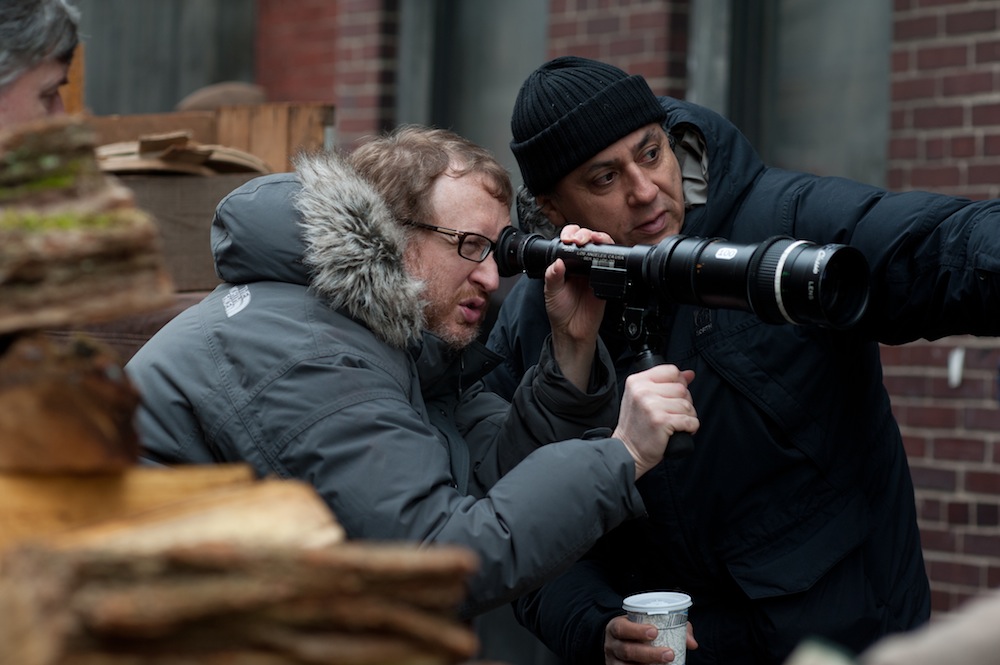James Gray’s Immigrant Story

ABOVE: JAMES GRAY ON THE SET ON THE IMMIGRANT
Filmmaker James Gray, who was raised in Queens, has made much use of his home city. Since his directorial debut, 1994’s Little Odessa, Gray has put together a rough-and-tumble New York-set oeuvre where plenty of grit (Russian mobsters, macho cops, feuding brothers) cloaks the real heart of his films: studies of individuals, often adrift, working to maintain family ties or find some semblance of love. It was fitting that, when Interview spoke with him at the Marrakech International Film Festival late last year, he said, “The best cinema is opposite of escapist—the kind of cinema that reminds me of what it means to be a person.”
Gray’s exploration of personhood reaches its crescendo in his latest film, The Immigrant, opening today. It’s a swelling, operatic, and at times, a deeply tragic account of the trappings of the American Dream, told through the perspective of Ewa (Marion Cotillard), a young Polish woman who arrives at Ellis Island in 1921 with her sister Magda (Angela Sarafyan). Due to illness, Magda is put in quarantine, and, Ewa, classified as a woman of “questionable morals” (she was sexually assaulted on the passage over), will be deported. She takes refuge in Bruno (frequent Gray collaborator Joaquin Phoenix), who says he’s a representative of the Travelers Aid Society and promises to get her a job. Instead, he’s a swindler who runs a burlesque cabaret on the Lower East Side and moonlights as a pimp. Ewa, trapped in prostitution, sets aside her cut of the business to bail Magda out of Ellis Island through Bruno’s connections.
Cotillard is gripping in her portrayal of Ewa, who, while fragile in her vulnerability, exhibits a steely fierceness when faced with the adversity of her situation. Much of Ewa’s dialogue is in Polish, which Cotillard learned and perfected for the film. “She’s like a silent film actress,” Gray says. “I found myself removing dialogue for her. I think she’s genius. You’re always wondering what the actor needs to help them in a particular scene. I’ve never had to help an actor less.”
Captured in dusty, soft-focused sepia by cinematographer Darius Khondji, Gray’s images of a certain New York offer an alternate view of the oft-idealized “pull yourself up by your bootstraps” narrative. It’s unflinching in depicting the struggle for survival and strife that gripped a generation. “Americans have many great qualities. One of them is not understanding history,” Gray jokes. “I wanted to do something which was vaguely historical. It’s very personal as well. Those stories in the movie, 80 percent of them are from my grandparents. They came over in 1923 and spoke English very badly until they died. What little I could understand I had to get through my father. They talked all about the trip on the boat, which became Marion’s dialogue in the confession scene, almost verbatim from what my grandmother used to say: ‘It’s very dirty, we all together.’ All that came from her. The mood of the tenements—all that was directly from my grandparents. In some way I was trying to talk about history and how we could forget it, but also it was a very personal thing, trying to explain how I got to be the person that I am.”
THE IMMIGRANT IS OUT TODAY.






